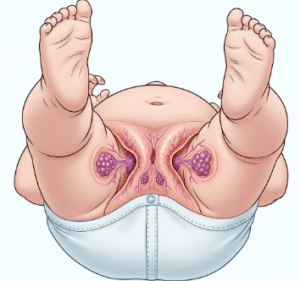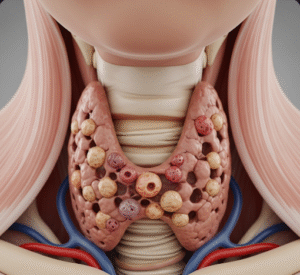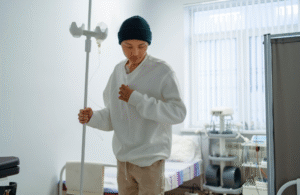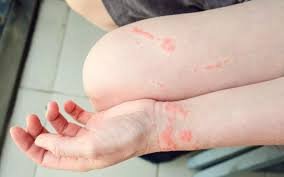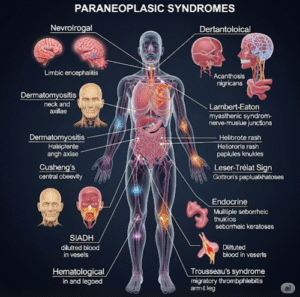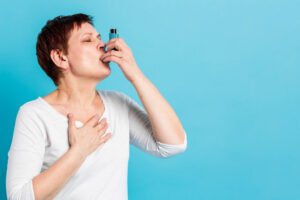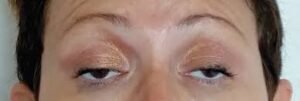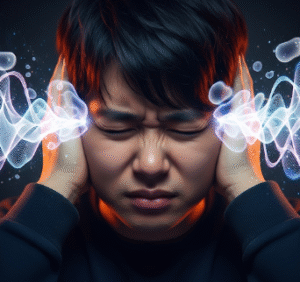A Comprehensive Guide to Skin and Care Treatment
➤ What it is
Pityriasis versicolor (also called tinea versicolor) is a common superficial fungal infection of the skin caused by the yeast Malassezia, which is part of the normal skin flora.
When Malassezia overgrows, it disrupts skin pigmentation, leading to:
- White, pink, tan, or brown patches,
- Fine scaling on affected skin,
- Itching (mild to moderate, especially in humid weather).
It commonly affects the:
- Chest,
- Back,
- Neck,
- Shoulders,
- Arms.
In Korea, pityriasis versicolor care combines antifungal therapies, skincare adjustments, and preventive regimens, often supported by advanced dermatology technologies.
➤ Why it’s done
Patients seek treatment for pityriasis versicolor because:
- Cosmetic concern → discolored patches disrupt skin tone.
- Chronic nature → condition often recurs without preventive care.
- Comfort → itching and scaling can be irritating.
- Prevention of spread → while not contagious, lesions can expand without treatment.
- Cultural context in Korea → with strong emphasis on even-toned, clear skin, managing this condition is important both cosmetically and medically.
➤ Alternatives
Several treatment options exist for pityriasis versicolor:
Topical Treatments
- Antifungal creams, lotions, or shampoos (ketoconazole, clotrimazole, ciclopirox, terbinafine).
- Sulfur or zinc pyrithione soaps → reduce yeast growth.
- Selenium sulfide lotion/shampoo → applied to affected skin.
Systemic Treatments
- Oral antifungals (itraconazole, fluconazole) → for extensive or recurrent cases.
Adjunctive Skincare
- Gentle exfoliation with mild cleansers.
- Oil-control routines to reduce yeast growth.
- Avoidance of heavy, occlusive skincare products.
Korean Dermatology Approaches
- Medicated cleansing programs with antifungal washes.
- LED light therapy (blue light to reduce fungal load, red light to calm irritation).
- Customized K-beauty regimens focusing on barrier repair and oil balance.
➤ Preparation
Preparation for treatment ensures effectiveness:
- Dermatologist Consultation
- Wood’s lamp examination to highlight affected areas.
- Microscopic exam of skin scrapings to confirm Malassezia infection.
- Pre-Treatment Steps
- Avoid tanning or heavy lotions before visit.
- Bring details of skincare and body care products used.
- Korean Clinic Preparation
- Digital skin analysis often performed to map pigment distribution.
- Patch testing may be recommended if overlapping dermatitis is suspected.
➤ How it’s Done
Pityriasis versicolor care in Korea is multi-layered, combining medical and cosmetic strategies:
1. Topical Antifungal Therapy
- Ketoconazole or ciclopirox creams/shampoos applied once daily for 1–4 weeks.
- Selenium sulfide or zinc pyrithione washes used as both treatment and maintenance.
- Korean clinics may provide medicated cleansing routines tailored to skin type.
2. Systemic Antifungal Therapy (If Needed)
- Oral itraconazole or fluconazole prescribed for widespread or recurrent cases.
- Korean dermatologists carefully monitor for liver function during oral antifungal use.
3. Adjunctive Treatments
- Gentle exfoliation to remove scaling.
- Barrier-repair moisturizers with ceramides, hyaluronic acid.
- Lightweight, oil-balancing essences (mugwort, green tea, centella).
4. Cosmetic Care & Maintenance
- LED light therapy → helps reduce fungal colonization and calm skin.
- Brightening serums (niacinamide, vitamin C) to correct pigment changes.
- Hydration masks to restore even texture.
5. Preventive Programs
- Monthly or seasonal use of antifungal body wash (common in Korea’s humid summers).
- Skincare counseling to avoid comedogenic or heavy oils.
➤ Recovery
Recovery from pityriasis versicolor treatment depends on skin healing speed:
- Fungal clearance → usually within 2–4 weeks of antifungal therapy.
- Pigment restoration → may take weeks to months after yeast eradication.
- Symptom relief → itching and scaling improve quickly.
Aftercare Instructions:
- Use medicated body washes weekly as maintenance.
- Avoid oily lotions and thick sunscreens.
- Wear breathable fabrics to reduce sweating.
- Practice sun protection → uneven tanning worsens appearance.
Korean Recovery Practices:
- Barrier creams and calming ampoules for skin repair.
- Brightening treatments for pigmentation balance.
- Routine check-ups to prevent recurrence during humid seasons.
➤ Complications
If untreated or poorly managed, pityriasis versicolor can lead to:
- Persistent pigment changes (white or brown patches lasting months).
- Recurrent outbreaks, especially in hot and humid weather.
- Emotional distress due to visible discoloration.
Treatment-related issues include:
- Skin dryness/irritation from antifungal washes.
- Side effects of oral antifungals (rare, but require monitoring).
Korean dermatologists minimize risks by:
- Combining antifungals with hydration and barrier-repair regimens.
- Offering personalized maintenance programs.
- Using non-irritant cosmeceuticals for skin tone recovery.
➤ Treatment Options in Korea
Korea is a leader in fungal skin condition care, blending medical dermatology with cosmetic skincare.
Why Korea excels:
- Integration of antifungal treatment with skincare science.
- Focus on cosmetic recovery → pigmentation and texture correction.
- Advanced dermatology tools → Wood’s lamp, digital skin imaging, LED therapy.
- Strong prevention culture → humid summers make maintenance programs standard.
Unique Korean Practices:
- Cosmetic-focused adjuncts → brightening serums, pigmentation facials.
- Seasonal antifungal maintenance routines prescribed proactively.
- Medical tourism services → international patients treated with combined dermatology + skincare programs.
- Holistic regimens → stress reduction, dietary advice, and skin barrier focus.
✨ Final Thoughts
Pityriasis Versicolor Care in Korea offers patients a comprehensive treatment plan that addresses both medical clearance of Malassezia yeast and cosmetic restoration of skin tone.
With antifungal creams, washes, or oral medications, supported by hydrating facials, brightening treatments, and preventive skincare regimens, Korea ensures results that are both effective and aesthetically satisfying.
This fusion of dermatology, advanced technology, and K-beauty culture makes Korea a global leader in pityriasis versicolor management, helping patients achieve clear, even-toned, and confident skin.



